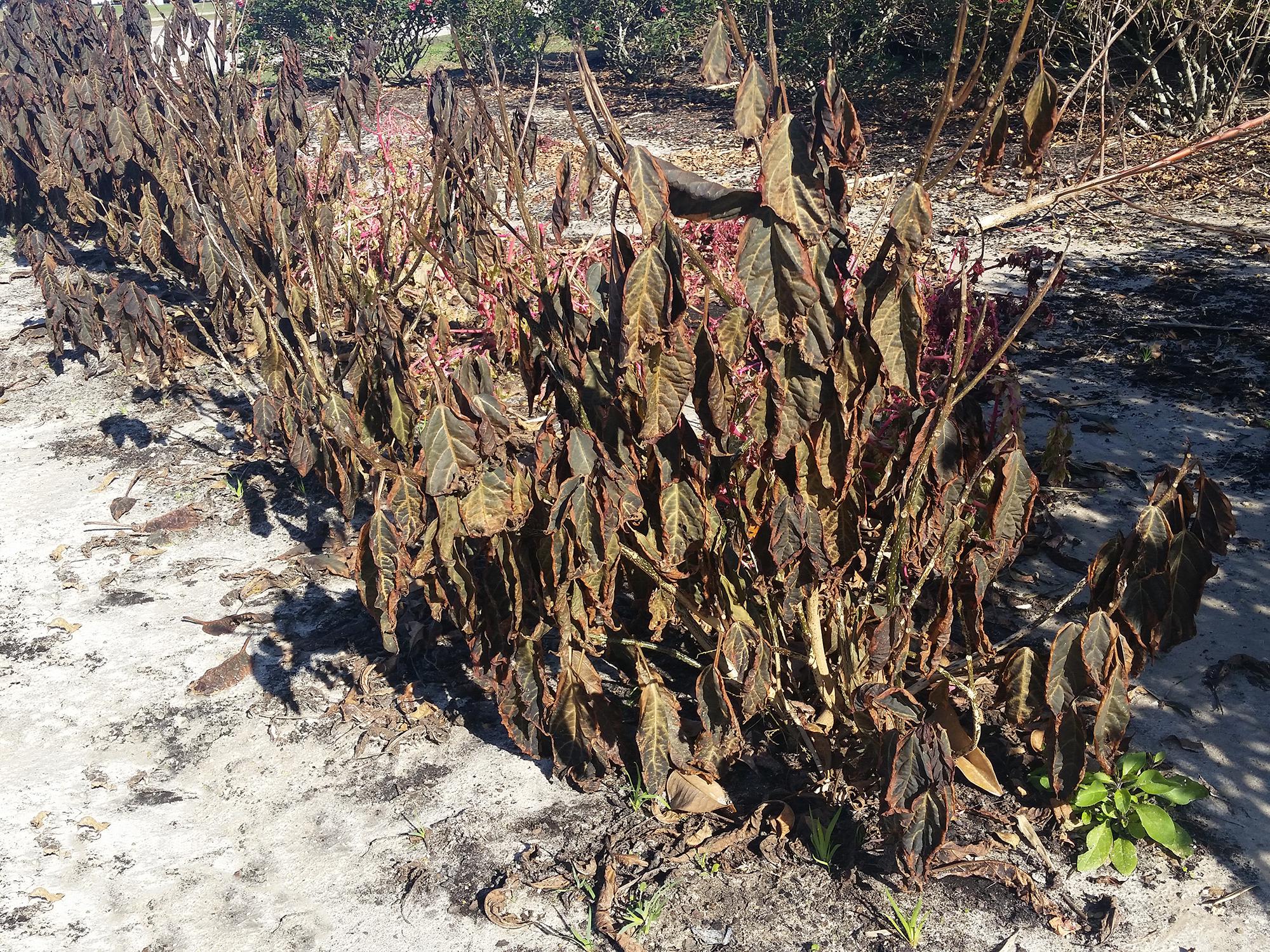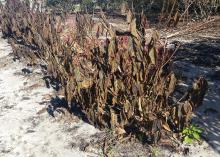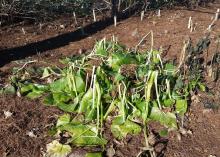Information Possibly Outdated
The information presented on this page was originally released on January 9, 2017. It may not be outdated, but please search our site for more current information. If you plan to quote or reference this information in a publication, please check with the Extension specialist or author before proceeding.
Extreme cold weather brought plant challenges
Wasn't this past weekend’s cold something else? We've had some cold snaps already this winter but nothing like those low temps. That kind of cold brings our attention front and center to winter.
The previous warm weather had gotten many gardeners a little complacent, including me.
I woke up to 24 degrees in Ocean Springs Saturday morning. While I had brought inside or covered some of my garden plants, I forgot one important task. I forgot to unhook the hoses and turn off the water. My hoses -- and I have multiples running throughout the yard -- and the spigots were frozen solid.
During the warmer afternoon -- if you can call 39 degrees warmer -- I was able to get everything disconnected. Luckily, it seems the only damage was to the faucet on my utility tub that had a piece of split tubing. It could have been worse and much more expensive.
Now that we’re in a warmer period, we will start to see some of the damage to our plants that super cold snap caused.
The most apparent damage will be to the tropical plants. These plants many gardeners love to have in the garden will have turned to mush in those subfreezing temperatures. Even if you covered them, there is still going to be damage once temperatures get into the lower 20s. You will benefit the plants by removing damaged foliage back to healthy tissue.
We will probably see some damage on woody landscape plants, but don’t jump the gun and start pruning them too soon. It is best to be patient and wait until the plants start pushing new spring growth. That is the time to more easily assess any winter damage.
Cool-season bedding plants can be a bit perplexing. In my case, I have Cool Wave pansies that have the reputation of being very tolerant of low temps. Initially, they looked pretty pathetic at 24 degrees, but they perked up when the afternoon temps hit that balmy 39 degrees.
My Telstar dianthus and Montego snapdragons handled the freeze like champs. I’m glad I choose these varieties every winter.
Many home gardeners, lulled by global climate change, may have thought last weekend was freeze-magedden. However, the cold weather actually fit right in line with our historic cold weather data.
The best information we can rely on is the U.S. Department of Agriculture’s hardiness zone data, which only looks at low winter temperatures.
For Ocean Springs, where my garden is located, we are in USDA Zone 9a, which has historic lows from 20 to 25 degrees. The actual low here was 23 degrees. Jackson, which is in USDA Zone 8a, has historic lows of 10 to 15 degrees and hit an actual low of 17 last weekend. Tupelo, which is in USDA Zone 7b with historic lows of 5 to 10 degrees, reached an actual low of 12 degrees. So, these are certainly cold temperatures, but they are not out of the norm.
So, don’t panic: These winter temperatures are normal. Losing plants because of the low temperatures -- and every year, we do lose plants -- just creates an opportunity to try something new in the landscape next year.






